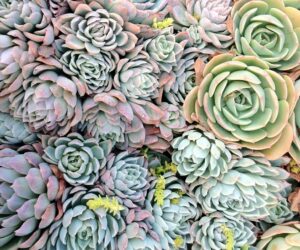Clematis is the queen of climbing plants! Old man’s beard, Traveller’s joy, Virgin’s bower are some of the common names for this popular plant. Clematis vines are so versatile that they can be grown on walls, pergolas, frames, containers, or left to scramble through trees and shrubs.
They come in so many different shapes and colors and sometimes even evergreen foliage. What is truly great about these climbers is that they are very easy to grow if you follow few simple steps. Keep reading to discover how to grow these beauties successfully…
1. Selecting the plant
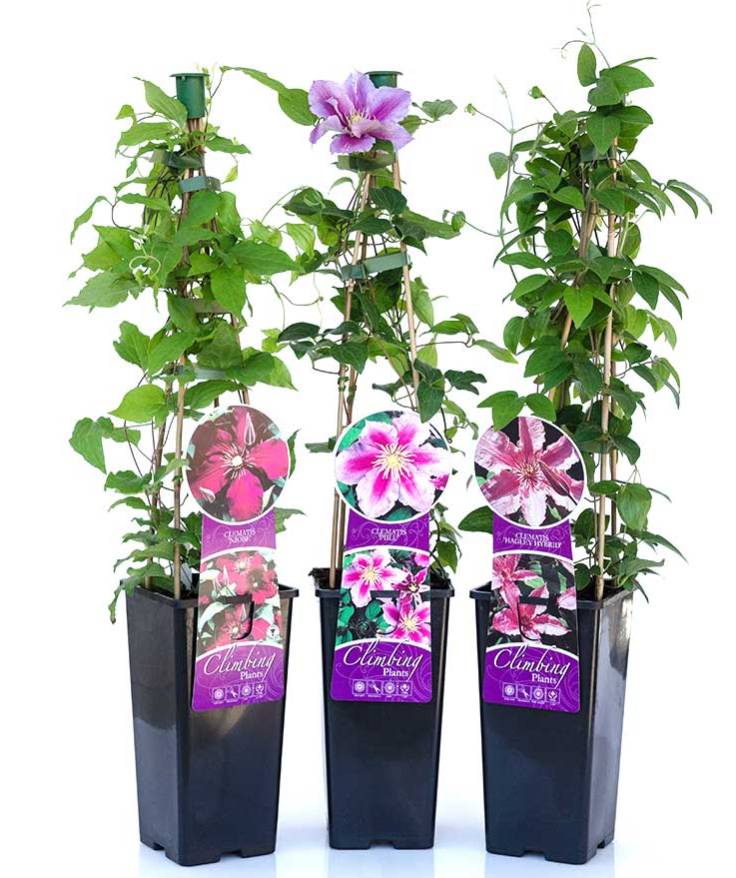
via wyeplants.co.uk
You will find dozens of different clematis varieties at the garden center. When choosing the perfect ones for your garden, you need to consider the variety’s mature height, flower form, and color. If you have space to choose, you can go with a 10- or 20-foot clematis vine, but there are more compact varieties if your space is limited.
Also, there are varieties with large flowers and some with smaller blossoms, double blossoms, and lovely bell-like flowers. The colors you can choose from are white, lavender, purple, wine red, or even yellow.
Choose at least 2 years old plant as clematis needs several years to mature and start flowering vigorously. Make sure the plant is container-grown and is robust and healthy.
2. Planting info
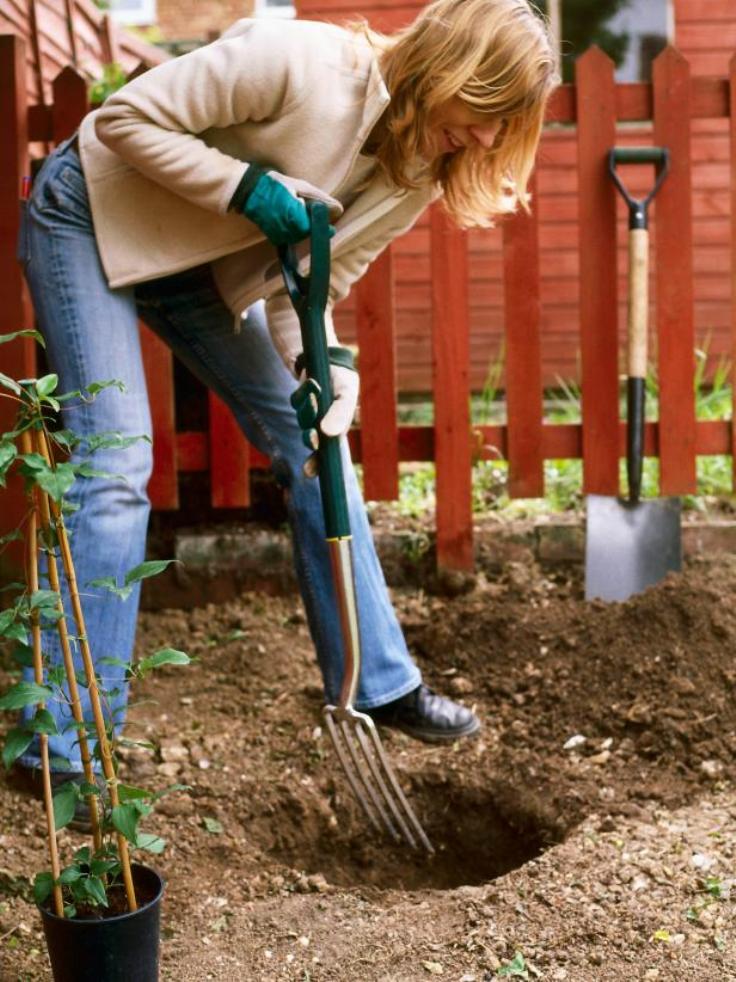
via hgtv.com
Clematis can be grown both in containers and in the garden. They are usually planted in fall or early spring, depending on the climate zone and the variety. Most clematis varieties need a lot of space as well as good airflow. As for the soil, it should be well-drained and rich. When you have found the perfect spot for planting your clematis vine, dig two feet deep hole and fill it with some compost. Cut back your plant a bit before planting to lessen the shock and help it adapt easier to the new environment.
3. Watering
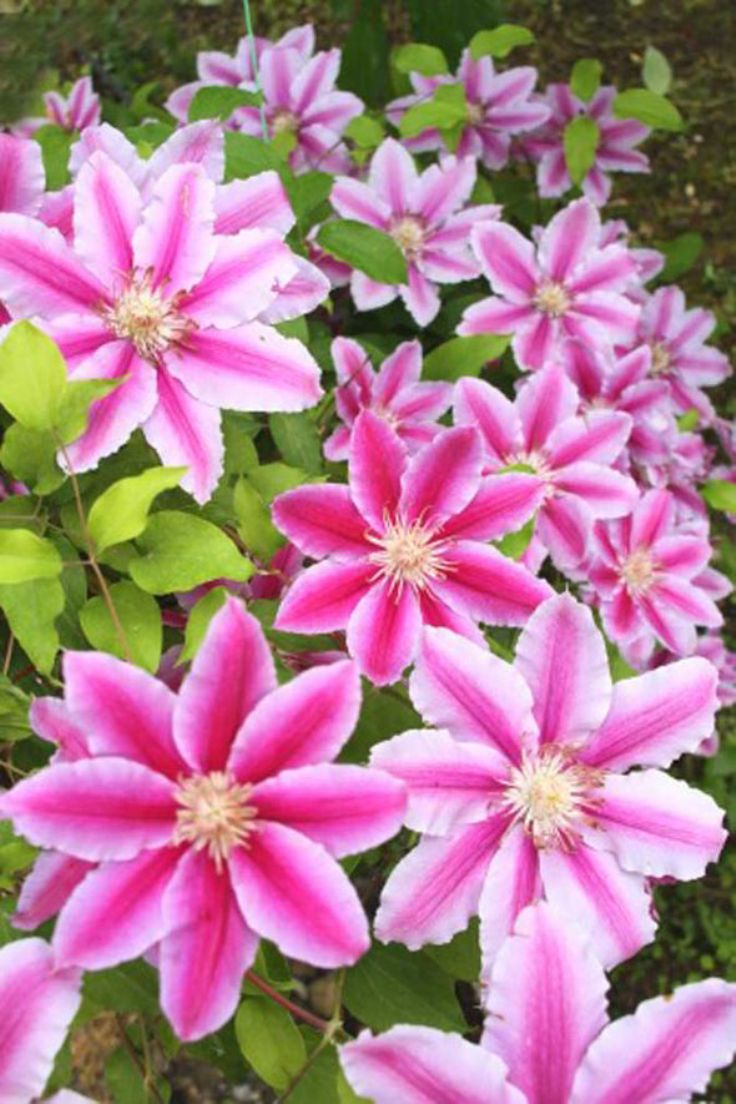
via express.co.uk
Once you have planted your clematis, you will need to water it regularly until the plant is well established. This means watering once a week the first season. If your plant gets through its first year, it will continue to thrive, and it will need just a little bit of care to be healthy and happy. During hot periods, all clematis varieties need watering. A deep soaking once a week is better than watering little but often.
4. Fertilizer

When you have a well-established plant, it will require some fertilizer. Feeding your plant regularly will help it maintain healthy growth and flowering potential. Use organic fertilizer to keep a good soil structure. Clematis responds well to tomato or rose food as well as any fertilizer in the range of 5-10-5 or 5-10-10 or good compost or chicken manure. In late winter or early spring, apply a potassium-rich fertilizer.
5. Supporting the plant
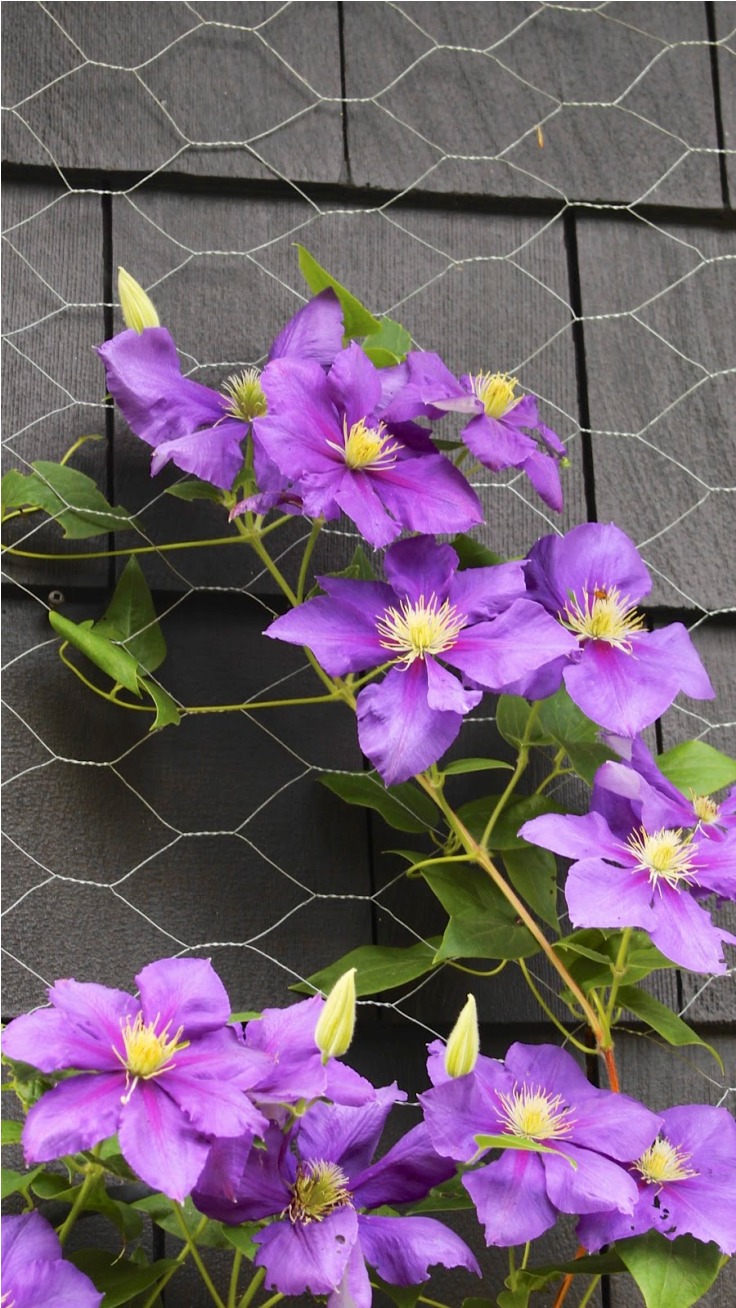
via newhousenewhomenewlife.com
To grow, clematis vines need something to climb on. This is why you should support the plant from day one. But clematis isn’t a plant that climbs by twining around something; it climbs by wrapping its leaf stems around something. These leaf stems are not very long, so anything more than about 1/2 inch in diameter is too wide for the leaf stem to twist around. This is why it is recommended to use twine, fishing line, wire, thin branches, wooden dowels, or steel rods. Even you have a trellis, add some twine lines or cover it with a grid of trellis netting. To keep the plant attached to the trellis, you will need to do some trussing, using a fishing line and twine.
6. Growing in containers
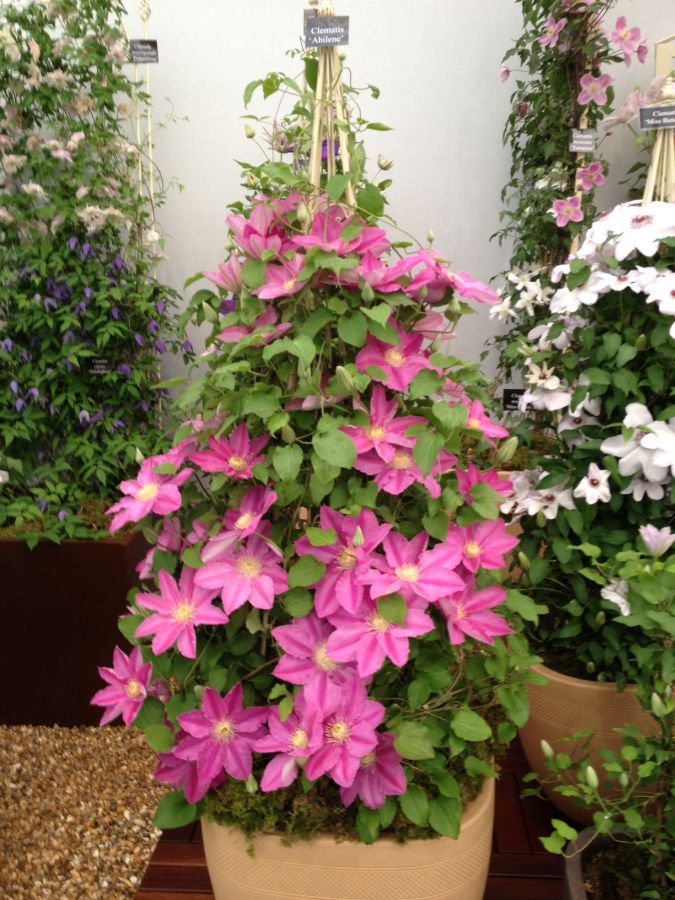
To allow good root growth, choose a container that is at least 45cm deep and wide. Again, support is important, so use an obelisk or a small trellis. Avoid multi-purpose compost and use loam-based compost instead. This is because multi-purpose compost will break down with years which will lead to poor drainage and nutrition.
7. Common problems
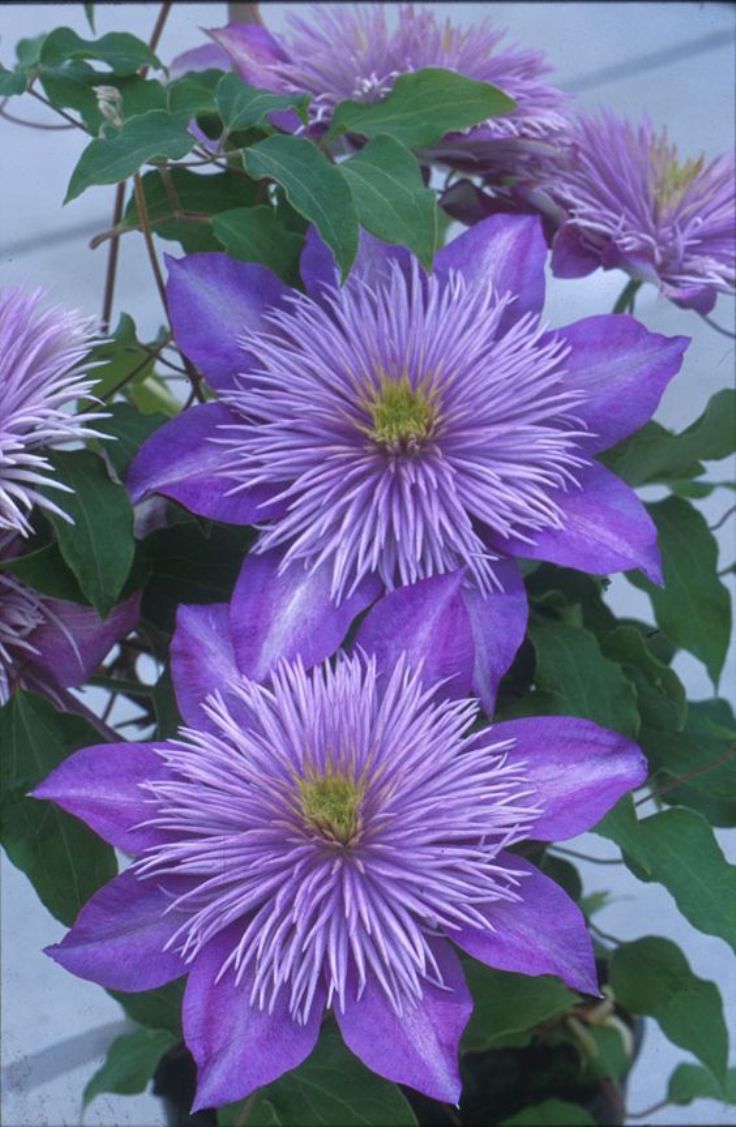
via pinterest.com
There are few common problems you can encounter while growing clematis. The first is clematis wilt which can cause vines to suddenly collapse and die after their foliage and stems have blackened. If there is poor air circulation, the plant can be affected by powdery mildew. Also, be aware of aphids and spider mites, and slugs. Slugs attack fresh spring growths, so make sure you put slug barriers.
8. Pruning group 1
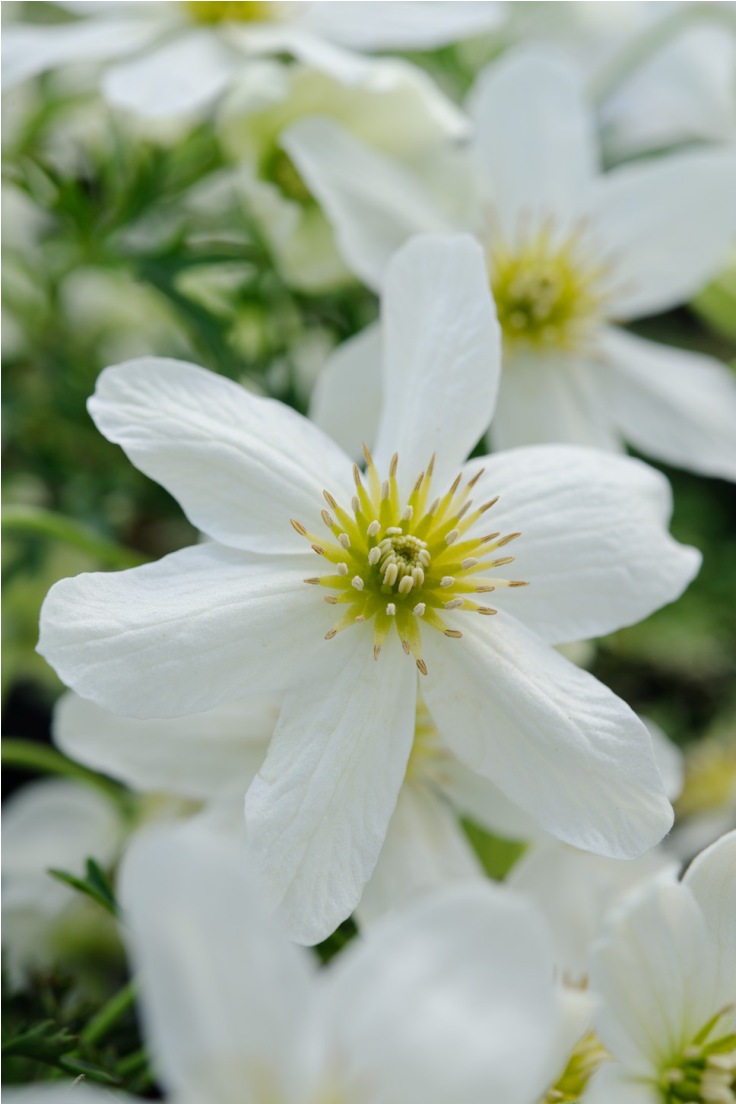
One of the most important things when growing clematis vines is pruning. Different varieties require a different approach. This is why clematis are divined into 3 pruning groups, and once you determine in which group your variety belongs, you will know exactly what to do. Group 1 includes winter clematis and evergreen clematis, which produce flowers on shoots that grew the previous summer. This group requires very little or no pruning. If needed, they can be lightly pruned after flowering and after the risk of frost has passed in late spring.
9. Pruning group 2
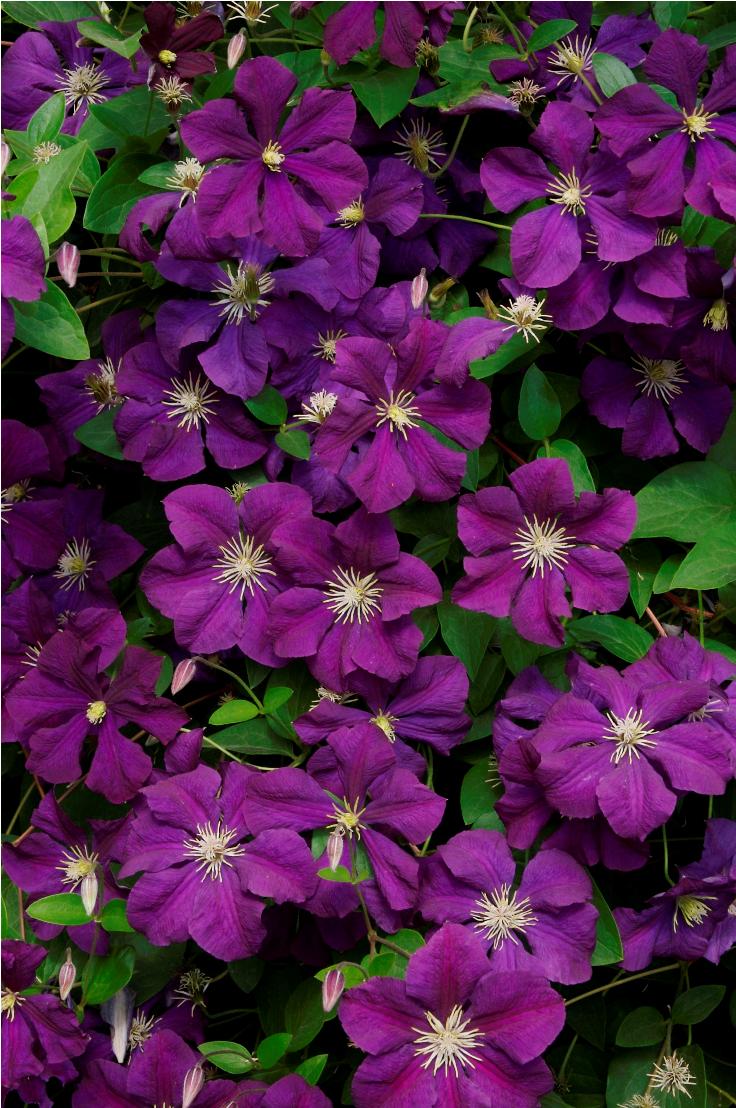
via monrovia.com
Clematis vines from group 2 need light pruning. This includes pruning to stimulate new shoots to provide late summer flowers. It is best to prune them once in late winter or early spring and then once in early summer when the first flush of flowers has faded. Both times avoid heavy pruning; you only want to encourage healthy new growth.
10. Pruning group 3
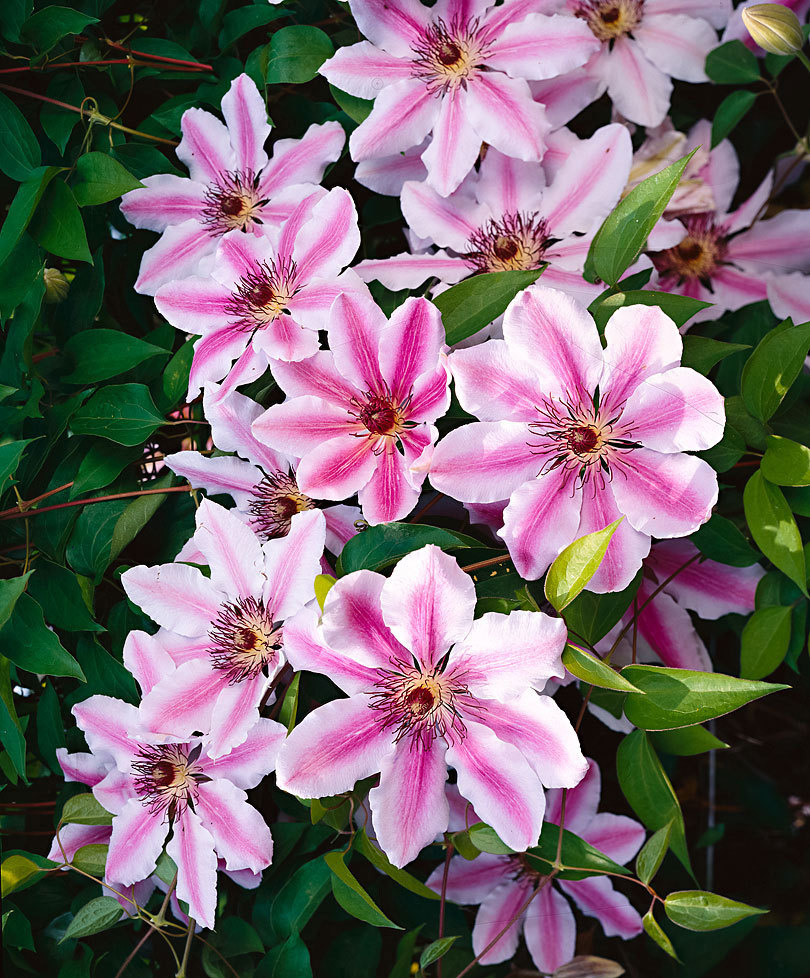
The varieties in group 3 require hard pruning. This is because they make new growth from the base each year. You should prune your group 3 clematis in late winter or early spring when the buds show growth signs. What you should do is cut the stems to just above a pair of healthy buds 15-30cm (6-12″) above soil level. If you don’t prune them, the varieties from this group will develop bare lower stems, so the flowers will be very high where you can’t see them.


